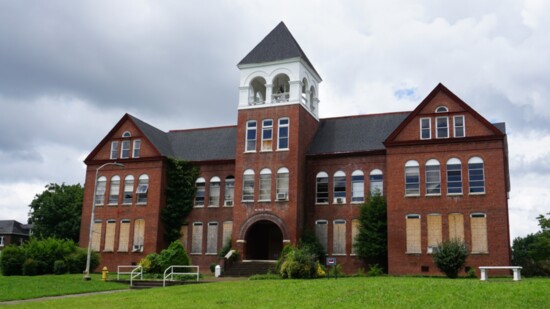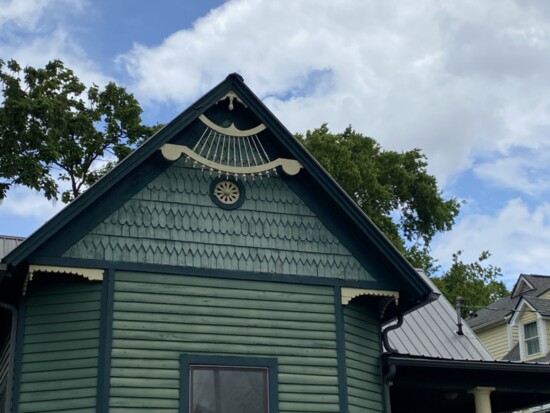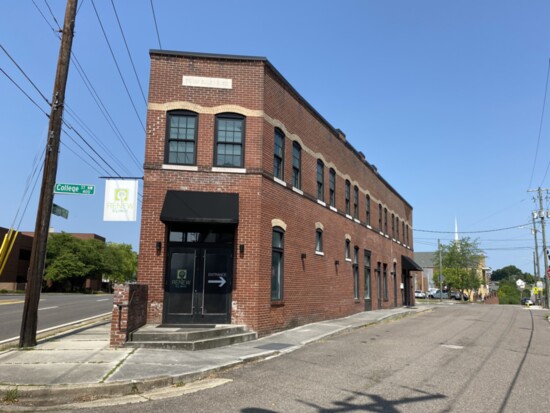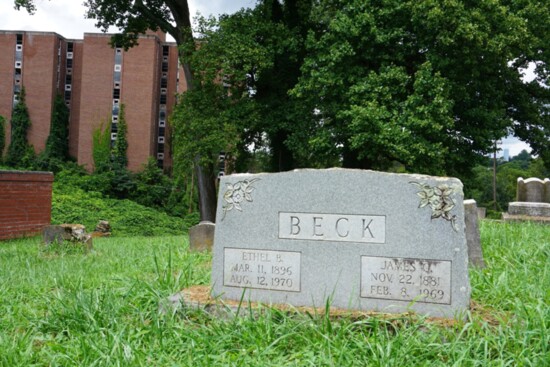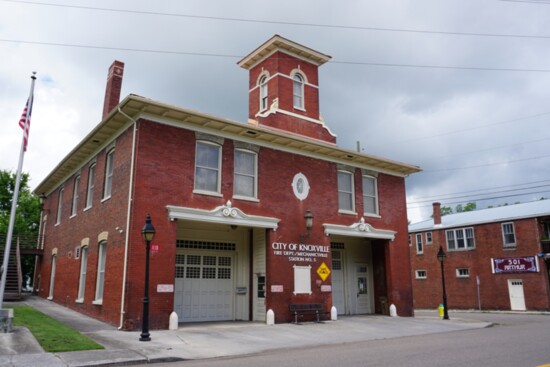Through research and engaging programs, the nonprofit Knoxville History Project (KHP) tells the city’s stories, focusing on those that have not been previously told, and those that connect the city to the world. KHP’s downloadable walking and driving tours provide opportunities for residents to discover and appreciate the many historical landmarks found throughout Knoxville that can be explored on foot or seen from a vehicle. Tours include Near-West, North, East, South Knoxville, Fountain City, Fort Sanders, and UT Campus.
A Driving Tour of Mechanicsville
Mechanicsville offers a cluster of stylish Victorian-era historic homes on the northwest side of downtown, west of Second Creek and north of the old Southern train tracks, plus some interesting old buildings still in use today. Developed soon after the Civil War, it’s arguably the oldest suburban neighborhood in Knoxville, and well preserved. The community is named for the “mechanics”—the ironworkers—who worked at the Knoxville Iron Foundry on Second Creek.
This tour begins across from the L&N Station on Western Avenue, heads west and in half a mile turns right across from Second Methodist Church onto College Street by the Prince Building. The tour loops around the residential district before heading west to University Avenue and uphill on College Street toward Knoxville College. Also included is a short exploration of nearby Beaumont and Lonsdale communities.
Explore the full tour and download KHP’s other walking and driving tours at knoxvillehistoryproject.org/historic-knoxville-driving-tours/
Prince Building: The distinctively triangular Prince Building (1549 Western Avenue) is eye-catching even today. Built by grocer-developer David R. Prince (1854-1928) in 1901-1902, it has hosted dozens of businesses, including barbers, beauty parlors, butchers, confectioneries, lunch counters and grills, and, in its earliest days, an Irish-family-run saloon, Pat Dewine’s. Located at the sharp end, Dewine’s lasted only until the city banned saloons in 1907. The retail was mainly on the sidewalk level; upstairs were five residences, and sometimes as many as a dozen residents. Three two-story brick “Flatiron” buildings from the turn of the century remain in Knoxville, and two of them are in Mechanicsville.
Victorian Homes: Several of Mechanicsville’s homes belonged to people prominent in Knoxville business, and they built large, elaborate, houses here. Modern owners have painted several of the houses in contrasting colors to highlight their unusual details. The Queen Anne house at 243 Deaderick Avenue, notable for its second-story porch and spindle banisters, was designed in 1888 by the then-new firm of Baumann Brothers. Joseph and Albert Baumann, sons of a German immigrant, were two of Knoxville’s first full-time architects. The original owner of the house was Market Square merchant A.L. Young, whose dry goods and notions store specialized in women’s clothing.
Arthur Street Fire Hall: The oldest active fire hall in Knoxville was built in 1909 on an “Italian villa” design by Baumann Brothers. It was reputedly the city’s last fire hall built for horse-drawn fire engines. Plaques that list City Council members rarely make interesting reading, but this 1909 plaque includes the name of Dr. H.M. Green, the nationally known physician who, until forced out by a radical streamlining of city government in 1912, was the last African American member of Knoxville’s Board of Aldermen for many years. Also listed here is John Paul Murphy, an Irish Catholic who had served as interim mayor of Knoxville, but was more proudly known as the (honorary) “Mayor of Irish Town,” the immigrant community that was almost adjacent to Mechanicsville to the northeast.
Knoxville College: Up on the hill looking back toward downtown, and originally known as Knoxville Freedmen’s College, Knoxville College was founded by the Presbyterian Church with major assistance from the Reconstruction-era U.S. Freedman’s Bureau, and opened in 1876. By the 1890s, the college was “one of the largest and best-conducted schools for colored people in the country.” By the 1970s, enrollment had swelled to more than 1,200 students. Alumni include journalist George E. Curry (1947-1916); New York politician C. Virginia Fields (b. 1945); longtime Tuskegee, Ala., Mayor Johnny Ford; Jake Gaither (1903-1994), the legendary Florida A&M football coach; Knoxville doctor and City Councilman Dr. H.M. Green; and Knoxville author and pioneering politician Robert Booker. After desegregation, as many Black students began to favor mainstream, multiracial universities, the college’s enrollment declined and lost accreditation in 1997. Although never formally closed, only a few students are enrolled today, using only a couple of buildings on the old campus.
Freedmen’s Cemetery: Adjacent to Knoxville College is the historic Freedmen’s Mission Historic Cemetery. Among those buried here are formerly enslaved members of Andrew Johnson’s household, some of whom accompanied the president to the White House. Laura Ann Cansler (1846-1926) is also buried here, the mixed-race woman who became the first public-school teacher in Knoxville history when she convinced occupying Union Gen. Burnside to let her open a school for Black children. She was the mother of several educators, including well-known author Charles Cansler. Community leaders James and Ethel Beck, for whom the Beck Cultural Exchange Center is named, are also buried here. In recent years, the cemetery has been the location of ceremonies celebrating the Eighth of August, East Tennessee’s traditional Emancipation Day.
The Knoxville History Project is an educational nonprofit that researches, preserves, and promotes the history and culture of Knoxville, Tennessee. Donations to support the work of the Knoxville History Project, an educational nonprofit, are always welcome and appreciated. Learn more at KnoxvilleHistoryProject.org
